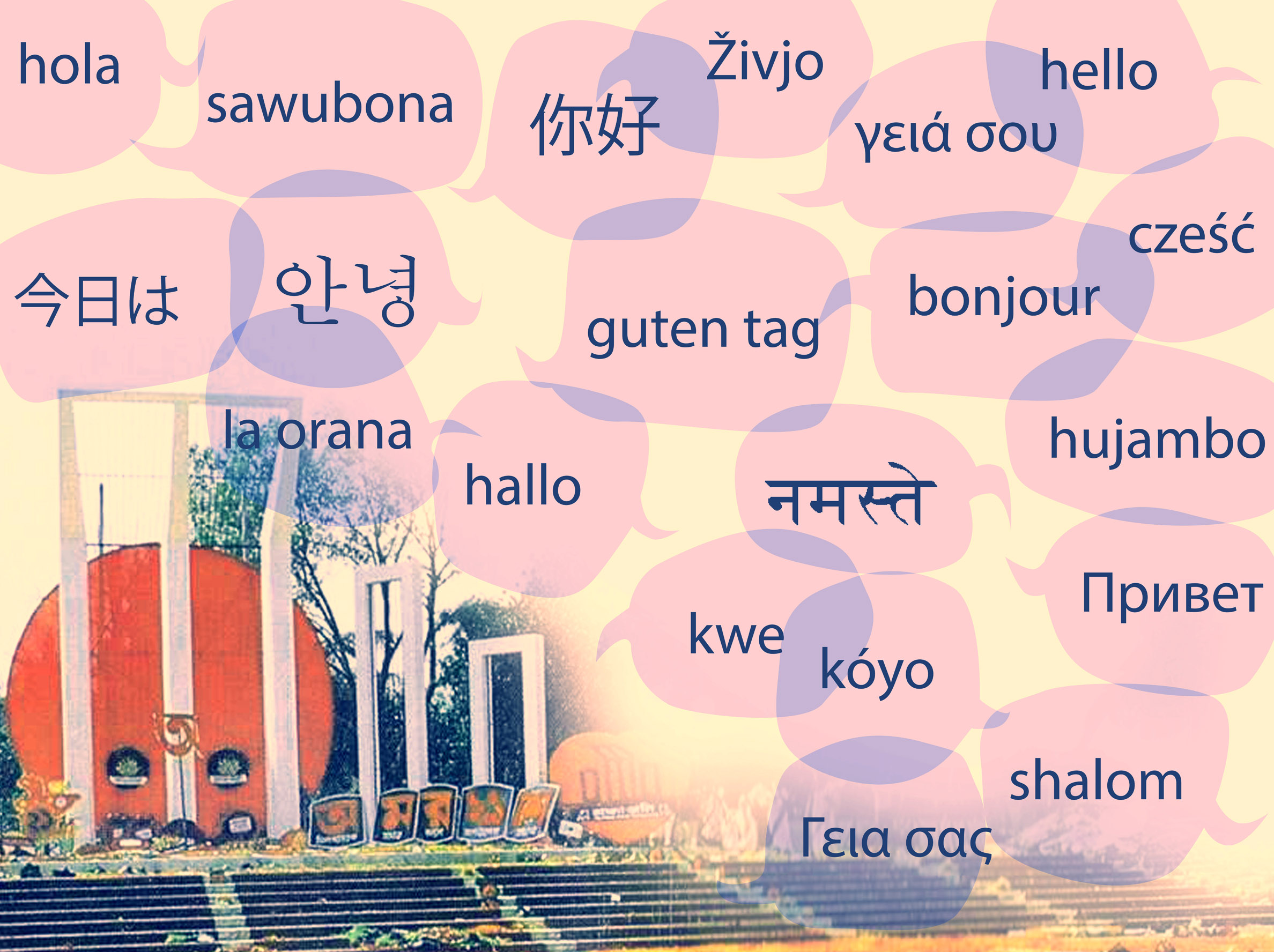Our mother tongues are considered to be one of the most significant components of our identity. The language we speak outlines our culture and heritage while helping us create a powerful sense of self. February 21 is International Mother Language Day, a day that should serve as a reminder of the rich variety of mother tongues across the world. However, February 21 isn’t only a day to cherish the language you spoke as a child. It’s also a day that commemorates the struggle for language rights in many places, such as Bangladesh, where conflict over language inspired the creation of the International Mother Language Day in the first place.
The significance of February 21 dates back to 1948 when then-president Muhammad Ali Jinnah declared Pakistan’s language to be Urdu, a minority language spoken mostly by the elite in West Pakistan. The people in East Pakistan (now Bangladesh) responded to the military administration’s enforcement of the ruling by starting what later became known as the Bangla Language Movement. On February 21, 1952, demonstrators at Dhaka University protested the ‘Urdu only policy’ and demanded that the government recognize Bangla as one of the official languages. The police fired bullets to try and halt the protest, killing several students and activists.
In November 1999, the United Nations Educational, Scientific and Cultural Organization (UNESCO) officially recognized February 21 as the International Mother Language Day to raise awareness of linguistic diversity. Since then, several countries around the world have started to celebrate the day.
But the idea behind International Mother Language Day shouldn’t only resonate with Bangladeshis. In a multilingual country like Canada, language is a central component of many people’s identity. Over 20 per cent of all Canadians, and 30 per cent of McGill students, speak a first language that is neither English nor French. The Official Languages Act of 1969, heavily amended in 1988, enshrine Canadian bilingualism into law and is – at least in part – meant to support French-speaking and English-speaking minorities in different parts of the country. Despite this, a 2004 report found that only 86 per cent of ‘bilingual’ posts in the federal public service were actually occupied by people who had mastered both languages.
Additionally, according to a 2011 census, over 60 Indigenous languages are spoken in Canada. These Indigenous languages have little or no official recognition and support, and are often at risk of extinction. In fact, a recent report from UNESCO lists 88 of Canada’s Indigenous languages as critically close to becoming extinct. The agency estimates that these 88 languages will disappear within the century. Much of this is due to the fact that English, the socially and economically dominant language, has been forced on Indigenous people. The residential school system, where Indigenous children were removed and isolated from their families and communities, has also played a huge role in the decline of Indigenous languages and cultures. Still today, there is a dire lack of political infrastructure to ensure the maintenance of Indigenous languages, and native speakers are almost always marginalized if they don’t assimilate. The International Mother Language Day should be taken as a reminder to fight for the preservation of Indigenous languages and cultures.
Yet celebrations of the day in Canada have been scattered, and often have fleeting effects. At McGill, February 21 has the potential to provide an opportunity to raise awareness of the pressures many people are fighting to simply speak their mother language. The threat of many languages disappearing around the world is very real, and February 21 should serve as a reminder to preserve and strengthen the languages and associated cultural identities most threatened by powerful pressures of forced assimilation.

